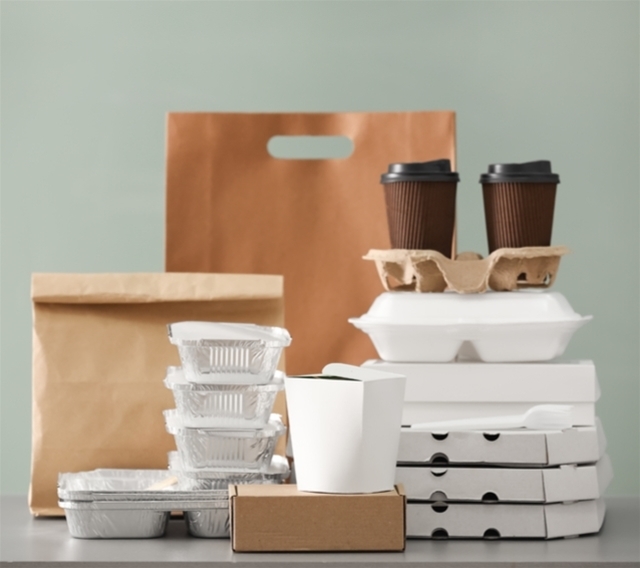Packaging Adhesives: The Glue Holding It All Together
Packaging adhesives play a vital role in the packaging industry. Without these specialized glues and bonding materials, it would be nearly impossible to manufacture packaging efficiently and meet all regulatory standards. From food and beverage packaging to consumer goods and electronics, adhesives are what allow today's complex packaging designs and constructions.
Hot Melts
Hot melts, also known as thermoplastic adhesives, are perhaps the most widely
used type of packaging adhesive. Comprising around 30-35% of the global
adhesive market, hot melts have become the adhesive of choice for package
construction due to their ability to be applied at high speeds on automated
packaging lines. Hot melts are thermoplastic polymers that remain solid at
room temperature but become liquid and adhesive when heated.
Some of the main applications for hot melts in packaging include case and
carton sealing, tray forming, lamination, and stiffening of carton flaps and
corners. The versatility of hot melts allows packaging manufacturers to quickly
and reliably bond everything from corrugated boxes to flexible pouches to rigid
plastic containers on high-output production lines.
New water-based and hot melt formulations being developed each year are driving
increased sustainability in packaging. Researchers are working to reduce VOCs
and incorporate recycled materials into hot melt resins to create adhesives
with lower environmental impact. Bio-based resins from renewable resources like
sugar cane are another area of innovation. These greener hot melts allow the
packaging industry to decrease its carbon footprint over time.
Solvent-Based Adhesives
While hot melts dominate for applications requiring high speed bonding,
solvent-based adhesives continue filling critical needs as well. Comprising
synthetic and natural resin systems dissolved in organic solvents, solvent
adhesives are able to form extremely strong, durable bonds across a wide range
of surfaces.
Key applications of solvent Packaging
Adhesives include laminating foil and film layers in food packaging,
die-cut lid and flexible packaging bonding, carton sealing, and case making.
Solvent adhesives offer excellent plasticizer and moisture resistance
well-suited for harsh production environments and lengthy product shelf lives.
However, solvent emissions present environmental and workplace safety concerns
that have driven development of new lower-VOC and solvent-free formulations.
Water-Based Adhesives
As environmental and safety regulations have tightened globally, water-based
adhesives have gained significant traction as a "greener"
alternative. Comprising emulsions of acrylic, polyvinyl acetate (PVA), and
other polymers dispersed in water, water-based adhesives are free of VOCs and
HAPs (hazardous air pollutants).
Some leading applications of water-based packaging adhesives include case and
carton sealing, corrugated lamination, and flexible laminations. Their
versatility makes them well-suited to bonding corrugated containers, folding
cartons, self-adhesive labels, and various paper and film-based packaging
substrates. Many water-based formulas can match or exceed the bond strength of
solvent competitors as well.
Recent advancements in water-based adhesive technology focus on improving heat
resistance for retort and hot-fill applications, decreasing drying times
through advanced formulations, and tailoring properties for bonding innovative
new packaging materials like compostable films and coated paperboards. As
regulations continue to drive the industry toward more eco-friendly options,
the market potential for water-based adhesives in packaging looks very
promising.
Natural Adhesives
While comprising a relatively small portion of the overall packaging adhesive
market currently, natural adhesive systems derived from plant and animal
sources are gaining attention due to their renewable nature. Natural adhesives
in packaging applications include those based on casein, starch, soy, and
various gum and resin extracts.
Key end uses involve case sealing, tray forming operations, lamination bonding,
and corrugated box making. Although bond strength and efficiency may sometimes
lag synthetic resins, natural adhesives offer compelling sustainability
benefits. Ongoing formulations research is working to enhance performance
properties while leveraging the "natural" marketing angle to appeal
to environmentally-conscious consumers.
From hot melts dominating high-speed case and carton sealing lines to
water-based innovations enabling safer lamination and package assembly,
adhesives will continue providing critical functionality throughout the complex
packaging industry. Factors like evolving regulations, raw material sourcing
strategies, and consumer demand for sustainability will drive ongoing research
and new product development globally. With constant technological advancements,
adhesives are sure to remain the glue cementing packaging constructions for many
years to come.
For More
Details On The Report, Read: https://www.newsstatix.com/packaging-adhesives-enabling-innovation-in-product-packaging/




Comments
Post a Comment